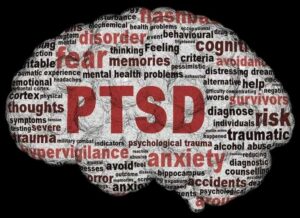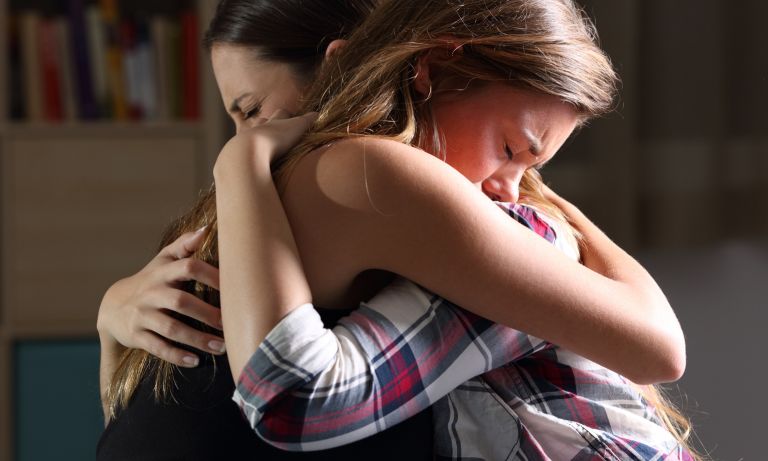It is no secret that women face unique challenges when it comes to post-traumatic stress disorder. While the symptoms and effects of PTSD can be very similar in men and women, there are some key differences that should be taken into account. In this blog post, we will discuss the challenges that women face when it comes to PTSD, as well as ways that you can manage the condition successfully.
Contents
What is PTSD?
 PTSD, or post-traumatic stress disorder, is a mental health condition that can develop after experiencing or witnessing a traumatic event. While anyone can experience PTSD, women are twice as likely to be diagnosed with the disorder. However, this condition can be managed with proper treatment and support.
PTSD, or post-traumatic stress disorder, is a mental health condition that can develop after experiencing or witnessing a traumatic event. While anyone can experience PTSD, women are twice as likely to be diagnosed with the disorder. However, this condition can be managed with proper treatment and support.
More often this condition is common with comorbidity, meaning it often occurs alongside another mental health condition such as depression or substance abuse. Women are also more likely to experience complex PTSD, which involves prolonged trauma and can lead to distorted thoughts about oneself and the world.
Women may be at a higher risk for PTSD due to experiencing different types of traumas than men. So, let’s discuss other factors that may contribute to this increased risk in women.
How Does PTSD in Women Look Like?
While many common symptoms of PTSD can be seen in men and women, research has shown that women tend to have more fears about safety and may experience different symptoms. Let’s discuss a few common symptoms in women with PTSD:
- Hypervigilance or constantly feeling on edge and alert to danger
- Distressing memories and flashbacks, often triggered by reminders of the traumatic event
- Avoidance of people, places, or activities that remind them of the trauma
- Difficulty sleeping or nightmares about the trauma
- Feeling detached or estranged from loved ones
- Challenges with emotion regulation, often leading to outbursts or mood swings
It’s important to note that symptoms may not always present in the same way for everyone, and women may also experience co-occurring mental health conditions such as depression, anxiety, substance abuse, or eating disorders.
PTSD in women might seem like a daunting challenge, and different women may find different coping strategies to be helpful. Therefore, if you are feeling overwhelmed, it’s important to seek professional help and work with a therapist who can support you in finding the right treatment approach for your individual needs.
How Common Is PTSD In Women?
 This issue affects women at a much higher rate than it does men. In fact, statistics show that approximately twice as many women will develop PTSD in their lifetime compared to men. In fact, women are twice as likely to develop PTSD after a traumatic event compared to men.
This issue affects women at a much higher rate than it does men. In fact, statistics show that approximately twice as many women will develop PTSD in their lifetime compared to men. In fact, women are twice as likely to develop PTSD after a traumatic event compared to men.
According to studies, it is estimated that about 10% of women will develop PTSD at some point in their lives, while only 5% of men will experience it. Also, women are more likely to have longer-lasting, and more severe symptoms of PTSD.
Therefore, it is important to understand the unique challenges that women may face when it comes to managing PTSD. Always remember that you can seek help from a mental health professional for support and treatment.
What Causes PTSD in Women?
The causes of PTSD can vary, so here are a few common causes of PTSD in women:
Experience of sexual assault or harassment
This is the most common cause of PTSD in women, with up to 50% of sexual assault survivors experiencing it. And unfortunately, sexual assault is alarmingly common in women – according to RAINN (Rape, Abuse & Incest National Network), one out of every six American women has experienced an attempted or completed rape in their lifetime.
Exposure to domestic violence
It is often overlooked, but exposure to domestic violence is a significant risk factor for PTSD in women. In fact, a study has found that women who have experienced intimate partner violence are three times more likely to develop PTSD. Unfortunately, domestic violence is a pervasive issue in our society, with one in three women experiencing physical violence by an intimate partner in their lifetime.
Difficulty during childbirth or pregnancy
Sometimes, women may experience symptoms of PTSD during pregnancy or after giving birth. This can be attributed to a traumatic delivery, the loss of a child, or abuse during pregnancy. These experiences can lead to increased anxiety and avoidance behaviors, as well as difficulty bonding with the newborn.
Other factors
In addition to the above, there are some other factors that cause women to have a higher risk of developing PTSD. These include:
- One is the higher likelihood of experiencing child abuse, which can lead to PTSD.
- Another factor is the societal expectation for women to be caretakers and nurturers, which can cause them to downplay or ignore their own needs and symptoms in order to take care of others.
- Also, natural disasters can disproportionately affect women, as they tend to bear the burden of caregiving for their families during and after such events.
- Finally, military combat can also be more traumatic for women due to the added stress of facing sexual harassment and assault within their own ranks.
So these are some of the reasons why women may be more susceptible to PTSD. Also, you should keep in mind that women may experience and express PTSD symptoms differently than men.
What Are The Challenges Faced By Women?
 There are a few unique challenges that women face when it comes to PTSD. These include:
There are a few unique challenges that women face when it comes to PTSD. These include:
- Higher rates of sexual trauma leading to PTSD, often from multiple perpetrators and/or repeated incidents
- The greater stigma surrounding mental health issues, in general, leads to a reluctance to seek help or treatment
- Difficulty finding support groups or therapy that addresses the specific challenges faced by women with PTSD
- Lack of research on gender differences in experiencing and treating PTSD
These are a few of the unique challenges faced by women with PTSD, but it is important to remember that everyone’s experience with the disorder is different. So you cannot assume that all women with PTSD will have these struggles, or that men do not face similar challenges.
For that, you have to be willing to listen and support the individual’s needs, rather than assuming what their experience may be. And for more information, do not hesitate to reach out to a professional.
How Can You Manage It?
When you understand the unique challenges women face with PTSD, it’s important to also understand how to manage and cope with symptoms. Some of the options are as follows:
Therapy
It is important to consider seeking professional help and therapy. A therapist can not only help you understand your experience and symptoms but also provide coping skills and strategies to manage them. There are a variety of therapies available, including:
- Cognitive behavioral therapy (CBT)
- Eye movement desensitization and reprocessing (EMDR)
- Group therapy
- Exposure-response and prevention (ERP)
These all therapy types work to address the root causes of PTSD and help you develop healthy coping mechanisms.
Medication
In some cases, medication may be prescribed to manage symptoms like depression, anxiety, or sleep disturbances that often accompany PTSD. It is important to discuss with a doctor or therapist about potential side effects and any concerns before starting any medication. A few common medicines might include:
- Selective serotonin reuptake inhibitors (SSRIs)
- Serotonin-norepinephrine reuptake inhibitors (SNRIs)
- Antidepressants
- Anti-anxiety medication
It is important to note that medication should not be the only form of treatment and should always be used in conjunction with therapy.
Self-care
 Along with seeking therapy and medication, self-care is a critical component in managing PTSD symptoms. However, women with PTSD may struggle to prioritize their own needs and take care of themselves. This can lead to increased stress and exacerbation of symptoms. It is important for women with PTSD to make time for activities that bring them joy or relaxation, such as:
Along with seeking therapy and medication, self-care is a critical component in managing PTSD symptoms. However, women with PTSD may struggle to prioritize their own needs and take care of themselves. This can lead to increased stress and exacerbation of symptoms. It is important for women with PTSD to make time for activities that bring them joy or relaxation, such as:
- Exercising
- Spending time with loved ones
- Practicing mindfulness or meditation
- Engaging in hobbies.
- Creating healthy habits – eating well and sleeping enough
It is also crucial for women with PTSD to establish boundaries and speak up about their needs. This can be difficult for women who have been socialized to put others’ needs before their own, but setting boundaries and advocating for yourself is essential to managing PTSD symptoms.
So these are a few tips that women with PTSD can manage their condition. You should never feel alone in your struggle – reach out for support from loved ones, a therapist, or a support group. And remember to prioritize self-care and speak up about your needs. You deserve to lead a happy and healthy life.
Don’t be afraid to seek help – you are not alone in this journey. Take care of yourself!
Conclusion
In conclusion, PTSD in women can present itself differently and can be triggered by unique experiences. It is important for healthcare professionals to understand these differences in order to properly treat and support women with this condition. Additionally, there are various coping mechanisms and resources available for managing symptoms of PTSD.
Hence, you can take steps to address your condition by seeking support from healthcare professionals, utilizing coping mechanisms, and connecting with other women who have similar experiences. It is never too late to start healing and finding ways to manage the symptoms of PTSD.
If you are struggling then please contact Therapy Mantra for help. The team of experts here will be more than happy to help you out and get you on the path to a better life. Contact us today to learn more about our services. You can also book an online therapy session or download our free Android or iOS app.


